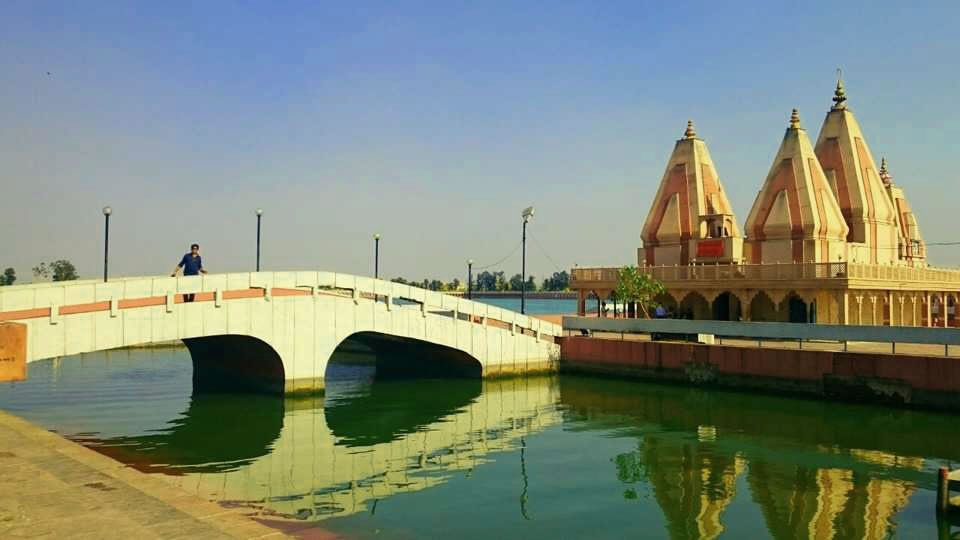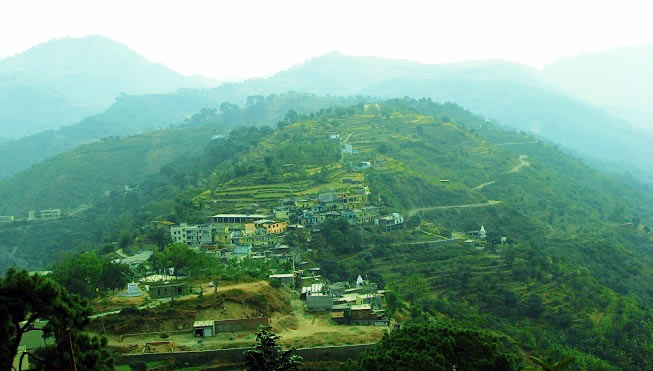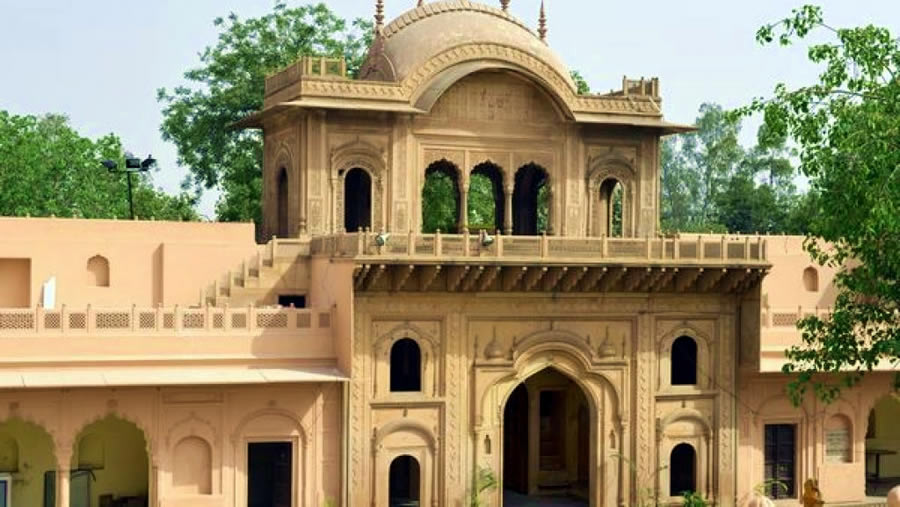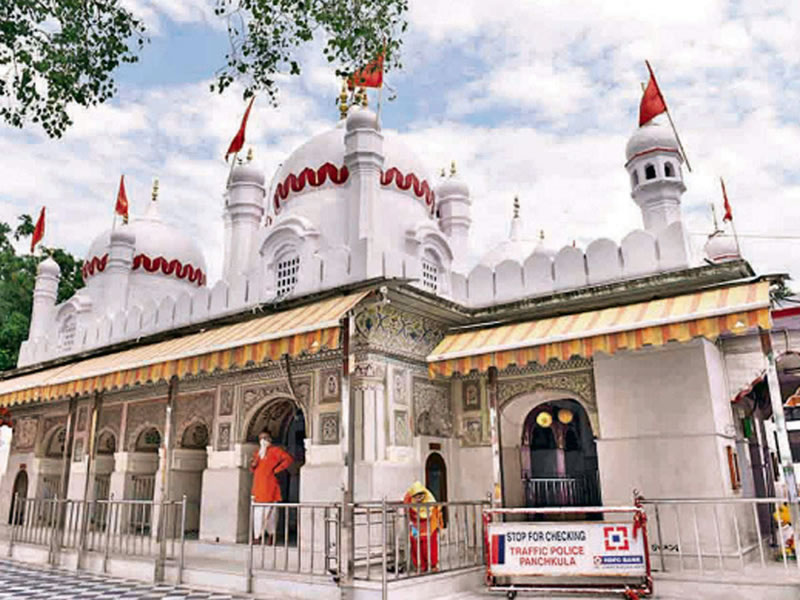
1. DLF Cyber Hub
With their traditional Ayurvedic spa, you may reclaim your tranquillity. The Ayurvedic therapies seek to bring your chakras back into balance while also assisting you in relaxing and recharging your senses. This spa is one of the greatest in the city because of the breath-taking views of the lush Rajokri Greens and the 11 large therapy rooms that we have available.
Take advantage of a wide range of Western and Indian treatments, massages, facials, and spa therapies to make you feel like a princess. The Spa at The Leela Ambience Gurugram is a one-of-a-kind experience when it comes to luxury spas in Gurugram, thanks to its tranquil atmosphere and sophisticated facilities.
Treatments are provided in the most nutritious ways that nature has to offer in the exclusive expanse for face and body therapy. There are no chemicals in any of the treatments, since they are composed entirely of natural materials.
2. Brahma Sarovar

Brahma Sarovar is a historic water pool near Thanesar, in the state of Haryana, in the northern Indian state of India, that is revered to Hinduism. Hinduism places a strong focus on bathing in order to maintain internal and outward cleanliness.
Most religious structures, including Hindu temples and Sikh gurdwaras, feature water ponds called sarovars in or around them. The Hindu genealogical registers from Kurukshetra, Haryana, are stored in this location as well.
According to itihasa, Lord Brahma created the cosmos from the territory of Kurukshetra after performing a massive yajna (a religious sacrifice). The Brahma Sarovar is considered to be the birthplace of civilisation in this region. The sarovar is also referenced in Al Beruni’s memoirs, known as ‘Kitab-ul-Hind,’ which were written in the eleventh century AD.
3. Gurudwara Nada Sahib
Gurudwara Nada Sahib is situated in Panchkula, in the foothills of the Sivalik range, on the banks of the Ghaggar river. It is a well-known sacred destination for Sikhs. In 1688, following the Battle of Bhangani, Guru Gobind Singh came to this location on his way from Paonta Sahib to Anandpur Sahib.
On one side of the courtyard, near the site of the former shrine, a 105-foot-tall (32-meter-tall) staff with the holy flag atop it waves. Every day, religious meetings and communal dinners are held in various locations. Every month, the full moon day is observed as a joyful event, which is attended by a significant number of people from the northern region, which is a positive development.
4. Morni Hills

Morni Hills is a hill station located on the outskirts of Panchkula in Haryana, near to Chandigarh, and is a popular tourist destination. Due to the fact that it is one of the only hill stations in Haryana, it is a favourite picnic site for both residents and visitors. The hills rise to a height of 1,220 metres and provide some truly breath-taking vistas from their vantage point.
The Thakur Dwar Temple, located on Morni Hills, is an important archaeological site, with sculptures going back to the 7th century being discovered there. Morni Hills is not only a spectacular view point, but it is also an important archaeological site.
Furthermore, it is an excellent location for trekking and bird-watching expeditions. More frequent species in this region are the Wallcreeper, Crested Kingfisher, Bar-tailed Treecreeper; Blue Peafowl; Kalij Pheasant; Red Junglefowl; Grey Francolin; Quails; Himalayan Bulbul; and Oriental Turtle Dove.
5. Raja Nahar Singh Palace

This morning, the walls of Raja Nahar Singh Palace in Ballabgarh are vibrating once more with the sound of drumbeats and horns. With the stomping feet of excited guests. And the exclamations of excitement at the sight of this immaculately kept palace, which formerly belonged to the great Raja Singh. The palace, which has been designated as a national historic landmark, dates back to the 18th century AD.
The uprising of 1857 marked a watershed moment in the history of our country. Raja Nahar Singh, the monarch of the minor state of Ballabgarh, was a pivotal figure in India’s war for independence from the British Empire.
Building the Palace: The oldest elements of Raja Nahar Singh’s palace were built by his ancestor Rao Balram, who came to power in 1739 and reigned until his death in 1759. This building was still going on in portions until around 1850. Today, urban centres have sprouted up in the vicinity of the palace. However, the magnificence of the palace continues to captivate everyone who come to see it.
6. Mata Mansa Devi Mandir

According to folklore, a cow used to visit the Shivalik Hills every day and give milk at three neighbouring stones (Pindies) on the peak. Local residents saw that there were three Holy Shilas that had originated, and they began to worship them. It was later discovered that one of the Holy Shilas had originated on the forehead of Shri Sati. After much deliberation, a temple was ultimately built as a result.
During the years 1811-1815, Maharaja Gopal Singh of Manimajra built the current major temple of Shri Mansa Devi, which is located on the Shivalik foothills in hamlet Bilaspur, Tehsil and District Panchkula. The temple was dedicated to Goddess Mansa Devi.
The Patiala temple, which stands at a distance of 200 metres from the main temple and was built by Sh. Karam Singh, the then Maharaja Patiala, in the year 1840, is well worth a visit.
7. Tomb of Khwaja Khijr
It was built atop the grave of a local celebrity, Khwaja Khizr, who rose to notoriety during Ibrahim Lodi’s rule. The tomb’s history and description are as follows: (1517-1526 AD). This tomb is one of the very few monuments in which ‘kankar’ blocks have been utilised in conjunction with red standstone, making it a rare find.
The tomb, which stands on a high platform and is strengthened with square fortifications at the corners, can be reached via a flight of broad stairs that leads to its entrance gate. Located at the terminal end of the central hallway, the gateway is comprised of two-arched arches with a façade that is embellished with motifs rendered in shades of blue, yellow, green, and dull red. The burial chamber is crowned by a hemispherical dome that stands on an octagonal low drum with an inverted lotus blossom finial.
The burial chamber is encircled by a hemispherical dome that sits on an octagonal low drum crowned with an inverted lotus blossom. It is believed that this tomb complex of Kwaja Khizr, son of Darya Khan Sarwani, was constructed between 1522 and 1524 AD, based on a Persian inscription found on the site.
